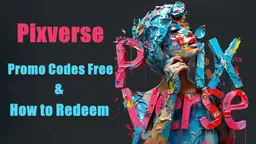
Dream 7B
Dream 7B is a groundbreaking 7-billion-parameter diffusion language model that matches or exceeds top-tier autoregressive models while offering superior planning abilities and flexible inference capabilities.
https://hkunlp.github.io/blog/2025/dream?ref=aipure

Product Information
Updated:Jul 16, 2025
Dream 7B Monthly Traffic Trends
Dream 7B received 7.3k visits last month, demonstrating a Significant Decline of -54.1%. Based on our analysis, this trend aligns with typical market dynamics in the AI tools sector.
View history trafficWhat is Dream 7B
Dream 7B, developed jointly by the University of Hong Kong and Huawei Noah's Ark Lab, represents the most powerful open diffusion large language model to date. Released in 2025, it is trained on 580 billion tokens from diverse datasets including Dolma v1.7, OpenCoder, and DCLM-Baseline. The model comes in two versions: a base model (Dream-v0-Base-7B) and a supervised fine-tuned instruction model (Dream-v0-Instruct-7B), both openly available to the research community.
Key Features of Dream 7B
Dream 7B is a groundbreaking open-source diffusion large language model developed by HKU NLP and Huawei Noah's Ark Lab, featuring 7 billion parameters. It represents a significant departure from traditional autoregressive models by using discrete diffusion modeling, enabling parallel token generation and bidirectional context understanding. The model demonstrates competitive performance comparable to leading autoregressive models in general tasks, mathematics, and coding, while offering unique advantages in planning abilities and flexible inference capabilities.
Bidirectional Contextual Modeling: Enables richer integration of information from both directions during text generation, enhancing global coherence across generated content
Flexible Generation Control: Supports various generation modes including completion, infilling, and arbitrary order generation through its iterative refinement process
Quality-Speed Trade-off: Offers adjustable inference steps allowing users to balance between generation speed and output quality based on their needs
Context-adaptive Token-level Noise Rescheduling: Dynamically adjusts noise levels for individual tokens based on contextual information, improving generation accuracy
Use Cases of Dream 7B
Complex Problem Solving: Particularly effective for tasks requiring multiple constraints or specific objectives, such as Sudoku solving and mathematical reasoning
Code Generation: Capable of generating and completing code snippets with strong performance comparable to specialized coding models
Text Completion and Editing: Flexible text generation capabilities make it suitable for various content creation and editing tasks, with ability to fill in gaps or complete partial content
Pros
Superior planning capabilities compared to similar-sized autoregressive models
Flexible inference options with controllable generation order
Competitive performance across general, math, and coding tasks
Cons
Requires careful learning rate tuning during training
Computational intensity during training (required 96 NVIDIA H800 GPUs)
Still needs more exploration in post-training techniques
How to Use Dream 7B
Install required dependencies: Install PyTorch and Transformers library from Hugging Face
Import necessary libraries: Import torch and transformers libraries:
import torch
from transformers import AutoModel, AutoTokenizer
Load the model: Load either the base model 'Dream-org/Dream-v0-Base-7B' or instruction-tuned model 'Dream-org/Dream-v0-Instruct-7B':
model_path = 'Dream-org/Dream-v0-Instruct-7B'
model = AutoModel.from_pretrained(model_path, torch_dtype=torch.bfloat16, trust_remote_code=True)
tokenizer = AutoTokenizer.from_pretrained(model_path, trust_remote_code=True)
Move model to GPU and set to eval mode: model = model.to('cuda').eval()
Prepare input: Format your input as messages list:
messages = [{'role': 'user', 'content': 'Your prompt here'}]
Tokenize input: inputs = tokenizer.apply_chat_template(messages, return_tensors='pt', return_dict=True, add_generation_prompt=True)
Generate output: The model supports flexible generation modes including completion, infilling, and controlled generation order. You can adjust diffusion steps to trade off between quality and speed.
Optional: Adjust inference parameters: You can customize the generation by adjusting parameters like number of diffusion steps - fewer steps for faster but coarser results, more steps for higher quality outputs
Dream 7B FAQs
Dream 7B is the most powerful open diffusion large language model to date, developed jointly by The University of Hong Kong and Huawei Noah's Ark Lab. It's a 7B parameter model that matches or exceeds top-tier Autoregressive language models of similar size on general, math, and coding abilities.
Popular Articles

FLUX.2 vs Nano Banana Pro in 2025: Which one do you prefer?
Nov 28, 2025

How to Use Nano Banana Pro Free in 2025 — Complete Guide (Step-by-Step)
Nov 26, 2025

Claude Opus 4.5: The Best Model for Coding, Agents & Computer Use (Full Guide)
Nov 26, 2025

Pixverse Promo Codes Free in 2025 and How to Redeem
Nov 26, 2025
Analytics of Dream 7B Website
Dream 7B Traffic & Rankings
7.3K
Monthly Visits
#2857884
Global Rank
-
Category Rank
Traffic Trends: Feb 2025-Jun 2025
Dream 7B User Insights
00:00:27
Avg. Visit Duration
1.25
Pages Per Visit
51.93%
User Bounce Rate
Top Regions of Dream 7B
US: 68.25%
HK: 9.45%
KR: 5.9%
JP: 5.66%
TW: 4.67%
Others: 6.07%







